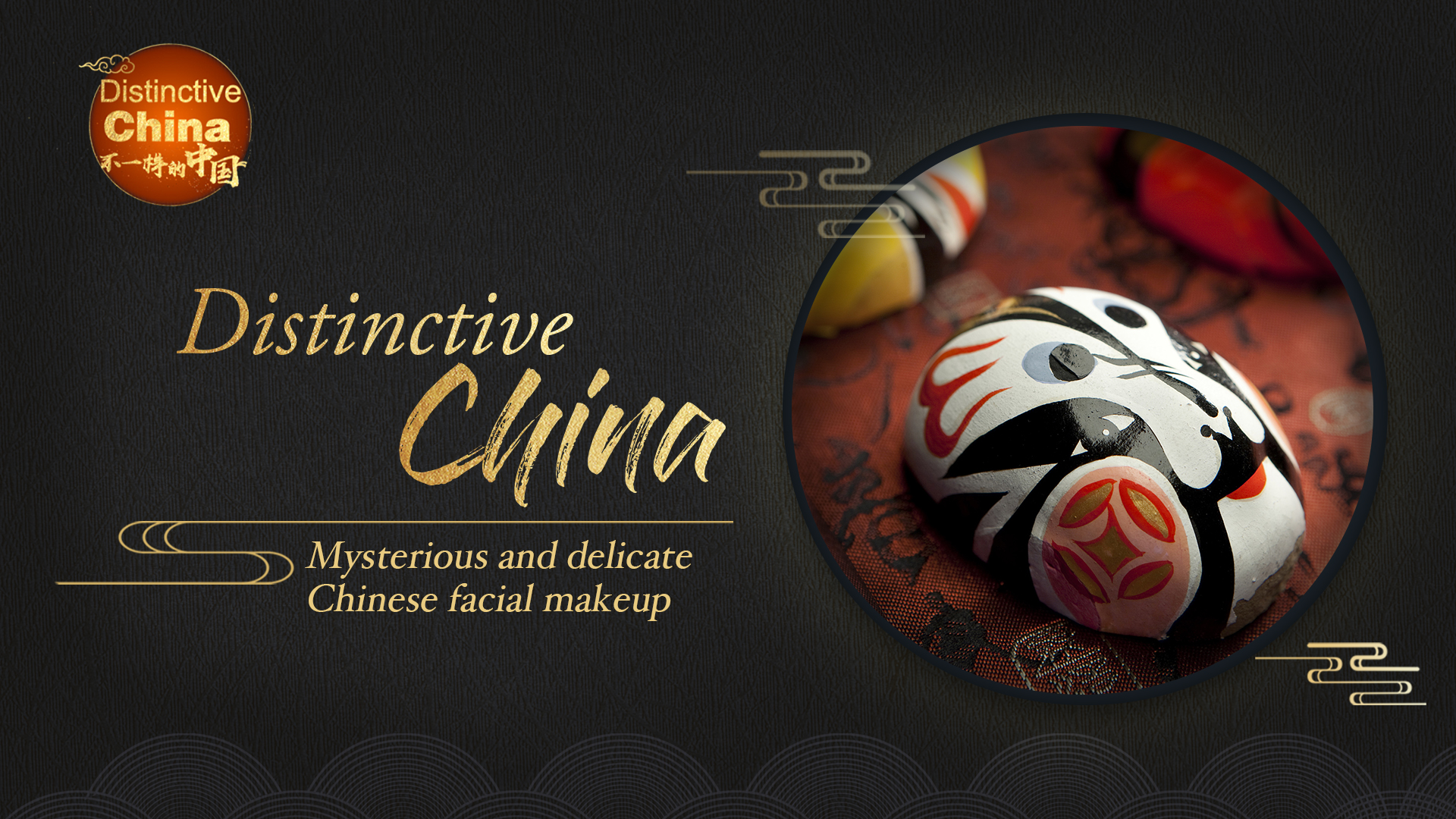04:08

Mask brings infinite imagination to people. What will you think of when you mention the mask? Is it the ancient Chinese bronze mask or an Egyptian pharaoh's gold mask or Chinese opera facial makeup of Eastern culture or the phantom of the opera of Western art? Although people who wear masks hide their faces, the light of the mask was preserved and passed on.
The origin of facial makeup used in Peking Opera can be traced back to the Southern and Northern Dynasties Period (420 - 581), more than 1,400 years ago, when leading actors used to wear masks. As the operatic arts developed, performers gradually took off their masks and painted colorful patterns on their faces instead so people could better see their facial expressions.
Chinese Opera facial makeup is a special makeup method with Chinese cultural characteristics. It combines personalities and symbols together. After years of development, it has become an important part of Chinese culture.
There are four roles in facial makeup, sheng, dan, jing, and chou. Chinese facial-makeup is extremely stylized in the colors and patterns used, but no two painted faces are alike. For example, there are more than 100 face -painting styles designed for Xiang Yu, the hero in "Farewell My Concubine," and each one is very different.
The painting technique for Chinese facial makeup in dramas is closely related to the character's personality. Therefore, makeup plays a significant role in the modeling of opera figures and has a strong appeal because of it. Besides, different colors also have special meanings in Chinese Opera facial makeup.
Red is the color of loyalty, integrity, and courage; Black suggests a serious and taciturn disposition, including strength and roughness; White reveals a crafty and suspicious character. Gold and silver faces symbolize mysteriousness and stand for monsters or gods.
Before the 18th century, masks were an indispensable part of the Venetian lifestyle. These strikingly luxurious, strange, and tiny masks concealed people's real faces. Western masks have a personal spiritual appeal, and they are a product of individualization.
But in China, as one of the onstage art techniques, various types of Chinese facial makeup enable the audience to easily know a character's personality and get more involved in the appreciation of the performance.
(Cover image made by Li Jingjie)

